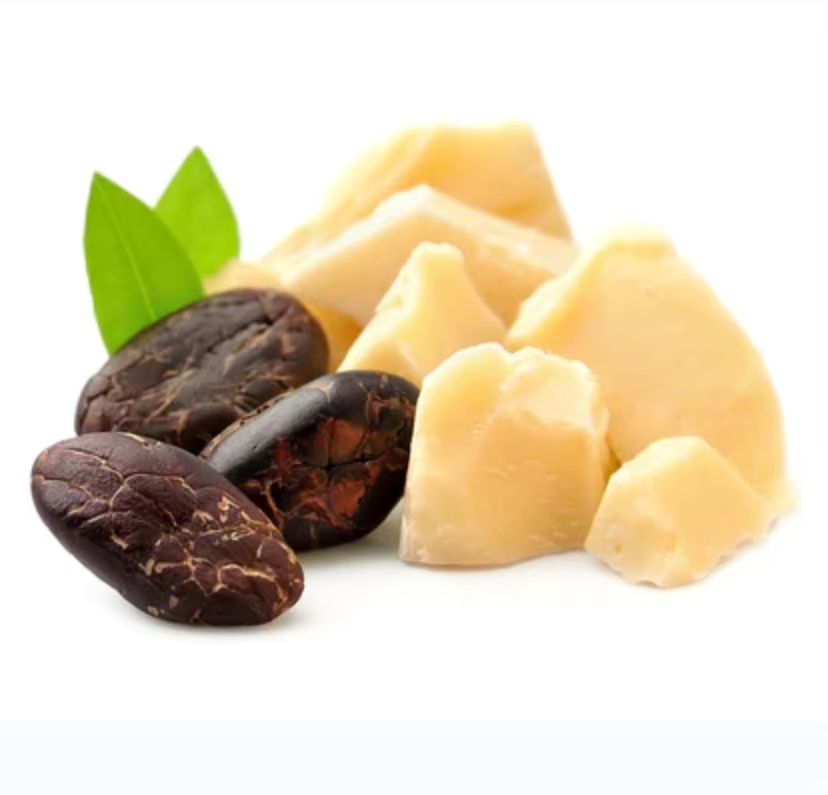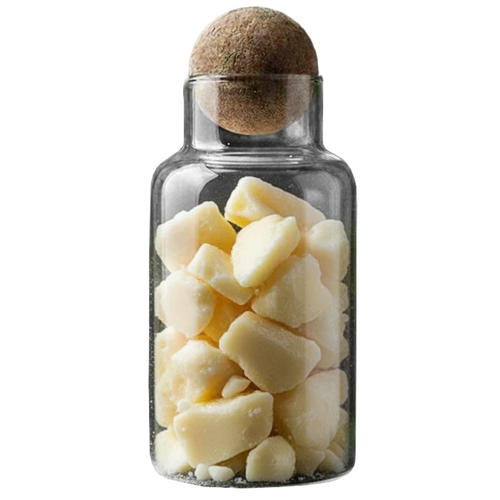Cocoa butter is the cornerstone of chocolate, confectionery, bakery products, and even cosmetics. Yet, for large-scale production facilities, sourcing consistent-quality cocoa butter can be challenging due to price volatility, seasonal fluctuations, and supply chain limitations. Enter the cocoa butter substitute—a versatile, cost-effective alternative engineered to mimic cocoa butter’s functional properties while offering industrial-grade consistency.
At MT Royal, we supply a comprehensive range of cocoa butter substitutes, including premium options from European suppliers like Latamarko, known for precision and reliability. In this guide, we explore the production process, industrial applications, benefits, and practical insights for manufacturers, procurement officers, and plant managers.
Understanding Cocoa Butter Substitute
What It Is and Why It Matters
A cocoa butter substitute is typically made from vegetable fats and sometimes combined with natural cocoa derivatives to replicate the functionality of cocoa butter in tempering, coating, filling, and molding. The goal is not just cost reduction—it’s to maintain viscosity, mouthfeel, flavor release, and melting behavior similar to natural cocoa butter.
Industrial-grade substitutes are designed to:
- Integrate seamlessly into chocolate and confectionery processes
- Reduce production downtime with faster melting and mixing
- Ensure uniformity across large batches
Premium brands, particularly Latamarko, provide substitutes that maintain the tempering behavior crucial for high-end chocolate products.
Key Ingredients in Cocoa Butter Substitutes
The composition of a substitute depends on the desired functional and sensory properties. Common ingredients include:
- Fractionated vegetable oils: Palm, shea, or illipe fractions for controlled melting points
- Cocoa powder derivatives: For aroma and slight chocolate flavor retention
- Emulsifiers: Lecithin or PGPR to improve flow and prevent separation
- Stabilizers: Antioxidants to extend shelf life and prevent rancidity
Understanding the precise formulation is critical because it impacts:
- Tempering characteristics
- Mouthfeel and snap
- Shelf-life stability
- Compatibility with other ingredients in large-scale production
The Production Process
Step 1: Selection of Raw Materials
High-quality vegetable fats are chosen for consistent melting points and oxidative stability. Fat fractions are often tested for iodine value, saponification number, and free fatty acid content to ensure uniformity.
Step 2: Blending and Refining
Raw fats are blended to achieve the target melting profile. Refining removes impurities and ensures smooth texture. MT Royal has seen facilities reduce scrap by up to 15% by using well-refined fats from reliable suppliers.
Step 3: Incorporation of Cocoa Derivatives
Cocoa solids or powders are added to adjust flavor and color. For premium products, substitutes from Latamarko maintain authentic chocolate flavor even in partially replaced formulations.
Step 4: Homogenization
The mixture is homogenized to achieve uniform particle size. Industrial homogenizers are used for large batches to maintain consistent quality.
Step 5: Deodorization and Tempering
To neutralize strong vegetable odors, deodorization is performed. The substitute is then tempered to mimic cocoa butter’s crystallization behavior, ensuring compatibility with chocolate applications.
Step 6: Packaging for Industrial Use
Bulk cocoa butter substitute is packaged in FIBC bags or bulk containers for factory-scale operations. Proper storage at controlled temperatures prevents fat bloom and maintains stability.
Industrial Applications
1. Chocolate Production
Cocoa butter substitute is ideal for:
- Enrobing chocolates
- Molded chocolate bars
- Chocolate fillings
It ensures consistent tempering and shine while reducing reliance on high-cost cocoa butter.
2. Confectionery and Bakery
- Chocolate coatings for candies
- Pastry fillings
- Layered bakery products
Substitute fats improve processing efficiency and prevent separation during baking.
3. Functional Food Products
- Low-fat chocolates
- Plant-based chocolate analogs
- Specialty confections
With substitutes, manufacturers can innovate while controlling production costs.
Advantages for Manufacturing Facilities
- Cost Efficiency – Reduces reliance on volatile cocoa butter prices
- Consistency – Uniform melting, flow, and snap across batches
- Faster Production – Quicker tempering and mixing
- Storage Stability – Less sensitive to temperature fluctuations
- Flexibility – Can be customized for specific functional or sensory requirements
From our experience at MT Royal, factories that adopt high-quality substitutes reduce rework and increase overall throughput.
Common Pitfalls in Industrial Procurement
- Selecting low-quality substitutes without proper tempering properties
- Ignoring supplier traceability and batch consistency
- Overlooking compatibility with existing chocolate or confectionery formulations
- Failing to evaluate shelf-life and storage requirements
Choosing trusted suppliers like MT Royal ensures access to traceable, food-grade, and certified cocoa butter substitutes.
Pro Tips for Production Supervisors
- Pilot test substitutes before full-scale production
- Monitor tempering and cooling curves carefully
- Adjust emulsifiers if viscosity differs from natural cocoa butter
- Store bulk substitutes under temperature-controlled conditions
- Maintain documentation for regulatory compliance
Premium options, especially from Latamarko, often reduce the need for emulsifiers due to their precise fat profile.
Comparison Table: Cocoa Butter vs. Cocoa Butter Substitute
| Feature | Cocoa Butter | Substitute | Industrial Advantage |
|---|---|---|---|
| Melting Point | 34–38°C | 34–36°C | Consistent tempering |
| Form | Solid blocks | Granules / powder | Faster integration in production |
| Flavor | Authentic chocolate | Near-identical (premium) | Stable sensory profile |
| Cost | High & volatile | Stable & lower | Budget predictability |
| Batch Consistency | Variable | High | Reduced scrap & downtime |
| Storage | Sensitive | Stable | Less temperature-sensitive |
| Applications | Chocolate & bakery | Chocolate, fillings, confectionery | Broad industrial use |
FAQ for Industrial Buyers
Q1: Can substitutes fully replace cocoa butter?
A1: Yes, in most industrial applications such as coatings, fillings, and molding.
Q2: Are they food-grade and safe?
A2: Yes, certified for HACCP, ISO, Kosher, and Halal standards.
Q3: Do they affect chocolate tempering?
A3: High-quality substitutes replicate tempering behavior and enhance batch consistency.
Q4: How should substitutes be stored?
A4: In a dry, temperature-controlled environment, away from moisture and contaminants.
Q5: What makes Latamarko substitutes premium?
A5: Precision European engineering ensures stable melting, authentic flavor, and minimal batch variation.
MT Royal: Your Trusted Supplier
At MT Royal, we supply manufacturers with a comprehensive range of cocoa butter substitutes, ensuring competitive pricing and industrial-grade quality. Our experience working across chocolate, confectionery, and bakery facilities allows us to guide clients in selecting the right substitute for their production needs. Options from Latamarko provide premium performance for high-end applications where tempering precision and flavor integrity are crucial.
Trends and Innovations
- Sustainable Sourcing: Ethical vegetable fats and traceable cocoa derivatives
- Functional Ingredients: Low-fat, low-sugar, and plant-based chocolates
- Automation & QC: Digital monitoring for consistency and compliance
- Bulk Packaging Innovations: FIBC, silo-feed, dust-free handling
- Premiumization: High-end chocolate lines increasingly use European-origin substitutes for stability and mouthfeel
Closing Thoughts
The production of cocoa butter substitute represents more than cost savings—it is a strategic decision that impacts production efficiency, product quality, and innovation. By choosing high-quality substitutes, optimizing integration, and partnering with trusted suppliers like MT Royal and premium brands like Latamarko, manufacturers can achieve consistent results, streamline operations, and maintain a competitive edge in the chocolate and confectionery market.
The question for decision-makers isn’t whether you can use cocoa butter substitutes—it’s how effectively you leverage them to maximize production efficiency, quality, and profitability.








No comment